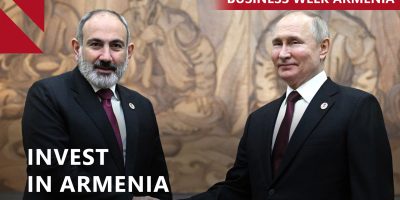By Emil Sanamyan, the article was published on the Focus on Karabakh, a project of the USC Institute of Armenian Studies
2017 began with dire predictions for Nagorno Karabakh. Writing in February for the Council on Foreign Relations, former American envoy for Karabakh Carey Cavanaugh argued that “the likelihood that Armenians and Azerbaijanis will clash over Nagorno-Karabakh in the next twelve months is high.” In March, the International Crisis Group warned that “the danger of even more perilous fighting remains real” and of “renewed appetite for confrontation” in the aftermath of heavy fighting in April 2016.
An escalation in fighting between February and July 2017 appeared to be bearing out those fears. In late February, there was a deadly flare up with two attacks across the line of contact, accompanied by artillery exchanges, caught on video. In May, Azerbaijan published a video of its guided missile attack on Armenian air defense unit. In June, four Armenian servicemen were killed in shelling shortly after they were visited by newly selected chair of Armenia’s National Assembly. And in July, after Armenian mortar fire killed a woman and child in a border village, Azerbaijan launched an armed drone attack on Armenian position. And then it went back to quiet.
Looking at incident rates and associated casualties, 2017 in fact saw less fighting than any of the previous three years. Last year’s combat deaths were approximately 50 for both sides, compared to close to more than 220 in 2016, about 90 in 2015 and 60 in 2014. For most of the year, fighting was limited to the kind of skirmishing typical of 2013 and earlier.
A resumption in diplomatic contacts in the latter part of the year reflected the two sides’ decision to take a pause in military operations. Still, there was no real prospect of agreement, no new cease-fire strengthening mechanisms, and no third-party sanctions for cease-fire violations. Overall, Azerbaijan retained the combination of military advantage and dissatisfaction with the status quo.
So, what changed between 2016 and 2017 that appears to have stabilized the security situation, and could this trend hold?
One evident difference was the recovery of the oil price from $30 at the start of 2016 to over $50 by the middle of 2017. This helped stabilize the economic situation in Azerbaijan: no major social protests comparable to the ones in early 2016 were reported in 2017. If, as many believe, the Azerbaijani government uses escalations in Karabakh as a kind of pressure release valve and a way to defuse political challenges, the experience of last year did not disprove that thesis.
The geopolitical factor frequently cited at the time of the April 2016 war related to Russian-Turkish tensions over Syria from late 2015 to mid-2016. Turkish leaders openly supported Azerbaijan in that brief war and many Armenian and Russian commentators suspected that Ankara may have even encouraged Baku to escalate.
Another change between 2016 and 2017 was the evident cooling in Azerbaijani-Russian relations. Russia appears to have somewhat curtailed weapons sales to Azerbaijan (though after billions in sales, it may just be that Azerbaijan has already bought all it wanted to buy). There were also tensions over the shuttering of the Russian Azerbaijani lobby organization ran by Ilham Aliyev’s son-in-law in May, and non-approval of the Russian ambassadorial nominee to Azerbaijan in July.
There were military-technical aspects to stabilization as well. Azerbaijan’s special forces units which carried out most of the ambush-style operations in 2012-16 sustained heavy casualties in April 2016, and as seen from February 2017 surveillance videos were denied the element of surprise they had enjoyed in the past. That in turn shifted the emphasis to artillery, including guided missiles, and armed drones as the preferred way to harass the Armenian forces. But this also exposes Azerbaijani forces and frontline population to Armenian counterattacks. Additionally, in August, the Israeli government suspended the license of a leading armed drone supplier to Azerbaijan a development that may have also affected Azerbaijani military plans.
Finally, starting from May 2017 frontline units of Azerbaijani army were shaken by an unprecedented crackdown on alleged Armenian spies. Reports suggest that hundreds of people were detained and at least half a dozen, including two officers, died in custody.
2018 will be the year of a constitutional transition in Armenia and presidential elections in Azerbaijan. Previous election years (2008 and 2013) both saw a relative reduction in frontline casualties, so the current de-escalation trend seems likely to continue, until something else changes.
















